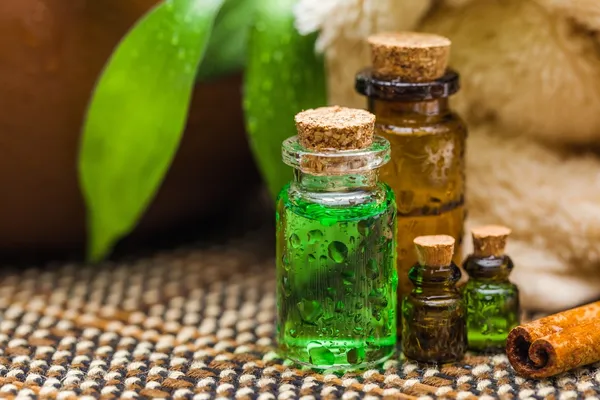No, sun poisoning doesn’t mean that you’ve been poisoned by the sun. This condition, also referred to as sun-spotting, is caused by prolonged ultraviolet (UV) radiation exposure, which results in extreme sunburn, skin inflammation and skin discolouration that appears in clusters or light patches that lack any skin pigmentation.
As innocent as it might seem, sun poisoning can be very dangerous, but it’s often left untreated. However, according to the Mayo Clinic, sun poisoning can result in symptoms of dehydration, skin swelling or peeling, pain, redness and blisters, nausea, dizziness, headache, fever, hive, wheezing, chills, and even loss of consciousness. In order to treat sun poisoning, take the following steps…
Hydrate, Hydrate, Hydrate
If sunburn, or worse, sun poisoning occurs, hydration is vital in order to replenish lost electrolytes. In severe cases, sip an electrolyte-infused sport’s drink as opposed to just water in order to replenish essential electrolytes more quickly.
Dehydration with severe sunburn or sun poisoning may cause symptoms of dizziness, headache, dry mouth, fatigue, and the absence of urination. If these symptoms occur, see a doctor right away.
Soothe Skin with Home Remedies
Inflamed skin due to sunburn or sun poisoning may be soothed using a collection of DIY home remedies. However, it’s always best to follow up with a doctor in cases of severe sunburn or sun poisoning.
To soothe, red, painful, itchy, and swollen skin apply moisturizing coconut oil or Aloe Vera gel directly to inflamed areas. You can also soothe skin with a compress of cold tea bags or cooled cooked oats.
See a Dermatologist
Regardless, of if you’ve already treated your skin at home or not, it’s vital to see a professional. In regards to matters of skin, a dermatologist can properly assess the damage of a severe sunburn or sun poisoning and treat damaged skin over the long term, even inspecting the skin for signs of skin cancer or other issues during future check-ups. Julie Karen, a board-certified dermatologist in New York City and spokesperson for the makers of Banana Boat, talked to Allure about the various options for treating sun poisoning and recommended seeing a dermatologist if you’re symptoms are severe. In this case, you’d have a fever, chills, and vomiting. “If not suspected or detected, sun poisoning can lead to severe dehydration requiring hospitalization.”
Basically, when in doubt, see a dermatologist. Depending on severity, a dermatologist may prescribe pain-relieving medication or topical steroids to treat skin spotting. Furthermore, extensive sun damage significantly increases risk of skin cancer, such as melanoma, which can be fatal. Routine skin checks with your dermatologist are recommended, especially for those with history of sunburns and tans.
Vitamin E Oil
Vitamin E oil can be purchased in capsule form and applied topically to treat skin damage (i.e., spots) due to severe sunburn. Simply pierce the vitamin E capsule and apply twice daily.
Additionally, you can take vitamin E capsules or eat vitamin E rich foods (i.e., nuts, avocados, leafy greens, and shellfish) to heal the skin from the inside out. Vitamin E is rich in antioxidants, which heal free radical damage from environmental exposure (i.e., ultraviolet rays).
Sunless Tanner for Skin Discoloration
The sun spots (spotting that lacks pigment) or skin discoloration that occurs with severe sun damage can take its toll on your appearance. You may find a sunless tanner (in cream, spray, wipes, or lotion form) can help disguise the damage.
According to the Skin Cancer Foundation, most dermatologists consider sunless tanners safer than actual sunbathing or using tanning booths. Sunless tanners can be matched to give your skin a sun-kissed glow, without the risk of sun damage and skin cancer.
Protect Yourself from the Sun
To prevent sunburn and sun poisoning, protection from the sun is essential. Luckily, there are several easy ways to enjoy the outdoors while protecting your skin. Firstly, make wearing a broad-spectrum sunscreen essential to your day by applying a sunscreen with SPF 30 or more at least 15-minutes prior to going outdoors and reapplying it as needed.
Secondly, shield your face with sunglasses and a hat, and if you are prone to sunburn, avoid the sun between the hours of 10am and 4pm, when the sun (and UV rays) are at their most potent.
Apply a Cool Compress
If you’re ever unlucky enough to get sun poisoning, there are two things you should do immediately. First, get out of the sun. Second, apply a cool compress to the affected area. “Ideally, you should go inside and gradually cool skin with a cool compress or a cool bath. Sun avoidance for several days is also crucial,” says Karen. While this won’t fix the problem, it should provide some relief and comfort from the uncomfortable symptoms like pain, swelling, redness, and tingling.
Take Ibuprofen or Acetaminophen
WebMD recommends taking ibuprofen or acetaminophen to help relieve the pain. Both ibuprofen and acetaminophen work wonders for illnesses like sun poisoning because they are anti-inflammatory, says John Zampella, MD, a dermatologist at NYU Langone. He also told Prevention that Tylenol can help as well, even though it’s not technically an anti-inflammatory.
Take a Cool Shower
This one kind of goes hand in hand with applying a cool compress. WebMD is just one of many sources that also recommends taking a cool, not cold, shower or bath. This “can help calm the skin, while applying hydrating creams or ointments can help repair your damaged skin barrier,” says Fitness Magazine.
Apply Honey
Not only is honey a tasty treat — it’s got some great health benefits too, especially when it comes to our skin. A 2014 study found that honey has “anti-inflammatory and analgesic properties, that can soothe irritated and itchy skin,” says StyleCraze. The source also cites another study that lists honey as a tool for treating blisters on the skin that often arise during sun poisoning and other illnesses.
For the best results, StyleCraze advises applying honey to the affected area and letting it soak for about 20 to 30 minutes before washing off with cold water. Do this three time a day.
Apply Tea Tree Oil
Tea tree oil has a lot of great health benefits, and according to StyleCraze, it’s also a great home remedy for sun poisoning. It backs this claim up by referring to a 2006 study published in the Clinical Microbiology Reviews. The study found that tea tree oil has anti-inflammatory and antimicrobial properties. The anti-inflammatory properties make it a great remedy for treating symptoms like redness, pain, and itchiness which are often associated with sunburns and sun poisoning, while the antimicrobial helps prevent further infection.
StyleCraze advises putting 10 drops of tea tree oil in 30mL of coconut oil. Mix it around and then apply it to the affected area. Do this once a day for best results. Be careful when applying to open sores as it can be irritating and may worsen redness and pain.
Prevention
One of the best treatments for sun poisoning is to prevent it from happening in the first place! WebMD explains just how easy prevention is. Just remember to always wear sunscreen that has an SPF of at least 30 and indicates “broad-spectrum” on the label. Also, limit sun exposure between peak hours of 10 a.m. and 2 p.m. This is when the sun is at its strongest, even in the winter! Lastly, always wear a hat, sunglasses and protective clothing.
“With any sun sensitivity, the best thing you can do is wear your sunscreen,” says Zampella to Prevention. “Make sure it’s broad spectrum, meaning it protects against both UVA and UVB rays. Photosensitivity is caused by UVA, and a sunscreen’s SPF is only a measure of UVB. Make sure to use about an ounce of sunscreen for entire face and body to get the adequate coverage. You need to reapply sunscreen every two hours.”















